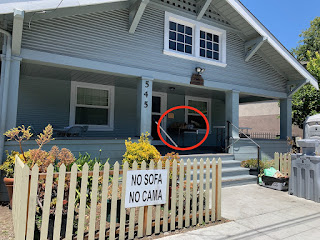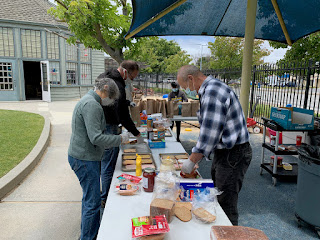My grandfather was a dad in his thirties during the Great Depression. Like many who lived through that period, he was extremely conservative in his finances and refused to take on debt (he did a home mortgage on his one-and-only house during the 1920's, before the Depression).
We baby boomers had a similar chastening experience during the "stagflation" of the 1970's. Many economists of the time argued that the U.S. could not pay for both the Vietnam War and the Great Society ("guns versus butter") without a massive increase in taxes. At the time the Federal Reserve couldn't "print money" willy-nilly, that is, buy unlimited amounts of Treasury debt, because the quantity of dollars was constrained by the amount of gold held at Fort Knox.
Richard Nixon caved to the intense pressure to
de-link the dollar from gold ("go off the gold standard") in 1971. The money supply could now increase more freely, and all the bad things we hear about the 1970's---runaway inflation, a stagnant economy, fixed-income retirees losing ground (by the way, California property taxes at the time increased by double-digit percentages along with home prices, giving rise to 1978's Proposition 13 that capped property tax increases at 3%/year), gas shortages, wage and price controls, "windfall profits" taxes on oil companies--are an indelible memory for those of us who lived through that period.
Inflation was finally
whipped, albeit painfully, by Fed Chair Paul Volcker
during the early 1980's by limiting the growth in the money supply, almost as if we were back on the gold standard again. Treasury rates rose to 15% or higher, and consumer and mortgage interest rates followed, before getting back to normal a couple of years later.
As a boomer now living off of savings, I have no desire to experience another round of 1970's-like inflation, and I certainly don't want to live through another "cure."
To be fair, there have been several instances after the Volcker era when the money supply rose dramatically, usually in response to a financial crisis, and inflation did not occur. Many economists have convinced themselves that the world has changed, and that we can "control" inflation.
Perhaps because I entered the workforce and paid bills during the 1970's I give more weight to 40-year-old negative experiences than latter-day economists, but I believe big inflation is coming.
The economy is warm if not hot, the Administration is proposing $trillions in additional spending, and the Federal Reserve is
promising to keep rates low. [bold added]
The Fed has kept interest rates near zero for the past year and signaled rates won’t change for at least two more years. It is buying hundreds of billions of dollars of bonds. As a result, the 10-year Treasury bond yield is well below inflation—that is, real yields are deeply negative —for only the second time in 40 years.
If we are going to reprise the 1970's, shift some investments into real estate, gold, art, or more stable foreign currencies that can keep up with dollar inflation. (I would recommend cryptocurrencies, but I don't understand them well enough.) Get out of bonds and low-growth dividend paying stocks. If you have variable-rate loans, convert them to long-term fixed-rate debt.
It
is possible that the economy will not experience inflation if high government spending on the wrong things (unemployment insurance extensions that keep workers home), high taxes, and high regulation results in stagnation. But an economic boom
and low inflation? No way...and I hope my pessimism is wrong.














































